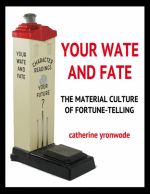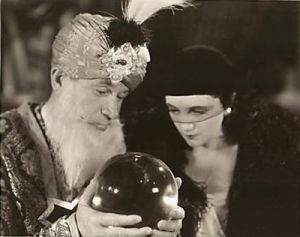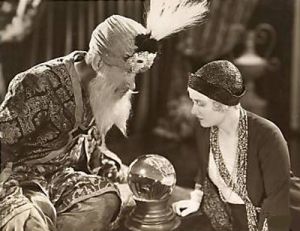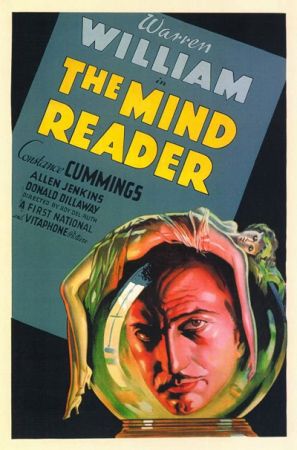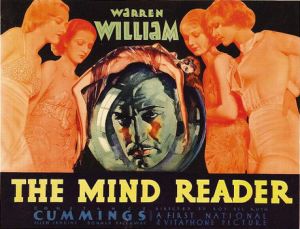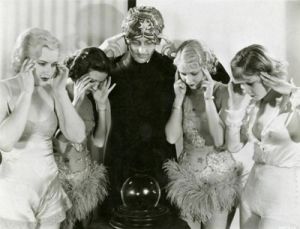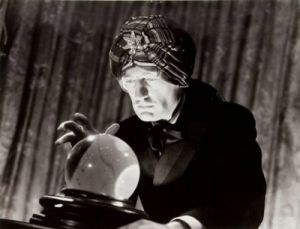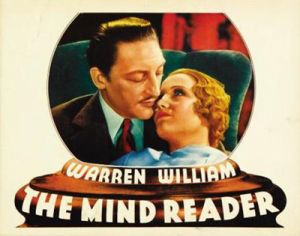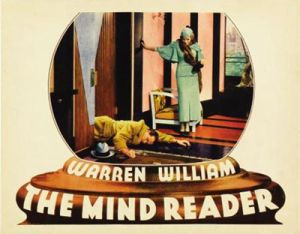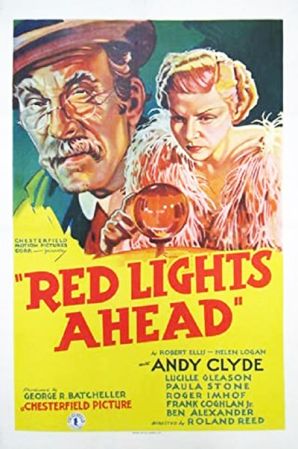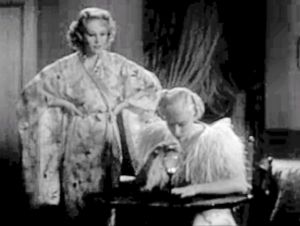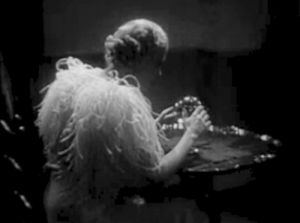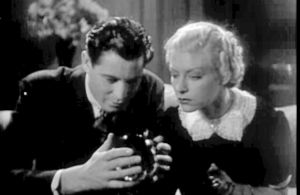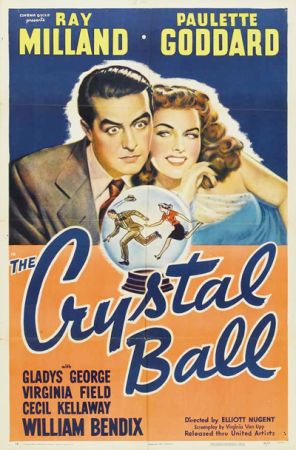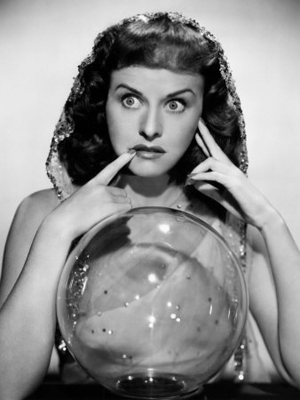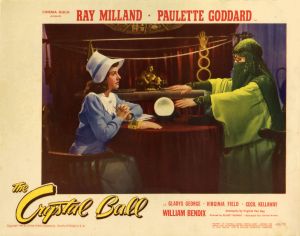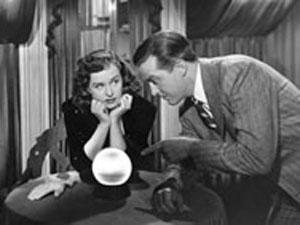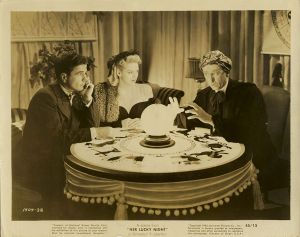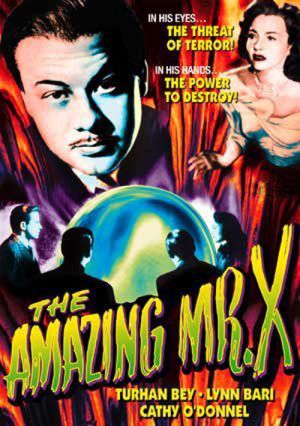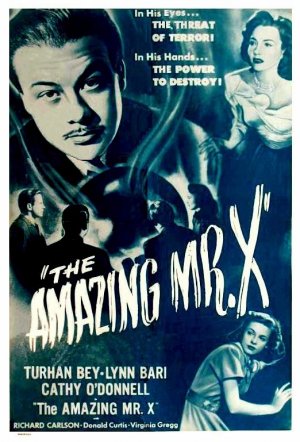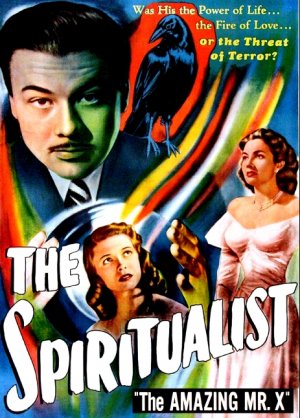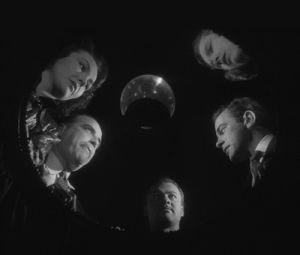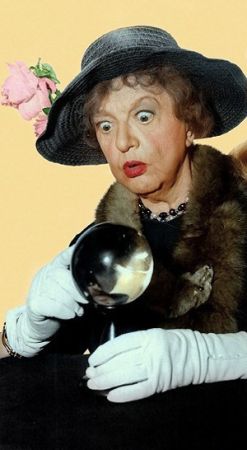Crystal Balls in Film 2: Difference between revisions
(edit and save) |
(edit and save) |
||
| Line 27: | Line 27: | ||
== Crystal Balls in Film Part Two== | == Crystal Balls in Film Part Two== | ||
When considering the subject of fortune telling, one is immediately hi with the generally agnostic or atheistic attitude toward any other form of spirituality or folk belief beyond extreme deference to Christianity (often in the form of Catholic devotionalism). Once the Hays Code was instituted in | When considering the subject of fortune telling, one is immediately hi with the generally agnostic or atheistic attitude toward any other form of spirituality or folk belief beyond extreme deference to Christianity (often in the form of Catholic devotionalism). Once the self-imposed film industry guidelines known as the Hays Code was instituted in 1934, not only was sexuality suppressed in cinema, but, with a few exceptions, actors from all ethnic minority cultures -- Jews , Blacks, Asians, Native Americans -- were mostly eliminated from leading roles and reduced to small comedy bits or set pieces as as villains or victims. Fortune tellers underwent the same degradation, and in very few post-Code films are the psychics truly psychic. | ||
During the Hays Code era, from 1934 to 1968, fortune tellers were generally portrayed as comedic bumblers, scamming fraudsters, or wicked villains -- and sometimes two of three in the same film. One favoured trope was the fraudulent fortune teller who is is surprised when a prediction actually comes true. Another stereotype was the fraudulent fortune teller who reforms in order to find love, or dies in the attempt. A third styling featured the evil "exotic" fortune teller, often Romani or Asian, who manipulates clients for monetary gain. A fourth concept was the wise elder who dons a costume and poses as a fortune teller to convey information to younger people in order to improve their lives. | |||
In addition to the cultural biases against fortune telling that permeate film, the portrayal of psychic readers faced other considerable barrier as a subject for film -- and that is the ludicrously | In addition to the cultural biases against fortune telling that permeate film, the portrayal of psychic readers faced other considerable barrier as a subject for film -- and that is the ludicrously | ||
Revision as of 04:36, 29 March 2023
My Patreon supporters paid for this page and had access to it one full year before the public did.
- Patreon Release Date: March 28th, 2023.
- Public Release Date: March 28th, 2023.
Please tell your friends that they can subscribe to my Patreon stream for $2.00 per week:
Patrons: To discuss this and other Patreon pages with me, join my private Patreon Forum:
Support Your Wate and Fate
All of the material you have access to here -- the instructive booklets, the nostalgic postcards, the boldly graphic ephemera, and all of the historical information researched and shared from the mind of the woman who is making it all happen -- can easily fit into one 8 x 10 foot room in an old Victorian farmhouse, but you would never see it without the investment of the time it takes to produce such a site and the caloric input such a site requires in the form of food for the writer, graphic designer, and database manager, as well as the US currency needed to pay for the computers, software applications, scanners, electricity, and internet connectivity that bring it out of that little room and into the world.
So, as you can see, this site is the darling of many, and it is growing at a rapid rate ... but although it is "free," there also is a cost. The financial support of my Patreon subscribers -- my Patrons -- underwrites this cost.
Crystal Balls in Film Part Two
When considering the subject of fortune telling, one is immediately hi with the generally agnostic or atheistic attitude toward any other form of spirituality or folk belief beyond extreme deference to Christianity (often in the form of Catholic devotionalism). Once the self-imposed film industry guidelines known as the Hays Code was instituted in 1934, not only was sexuality suppressed in cinema, but, with a few exceptions, actors from all ethnic minority cultures -- Jews , Blacks, Asians, Native Americans -- were mostly eliminated from leading roles and reduced to small comedy bits or set pieces as as villains or victims. Fortune tellers underwent the same degradation, and in very few post-Code films are the psychics truly psychic.
During the Hays Code era, from 1934 to 1968, fortune tellers were generally portrayed as comedic bumblers, scamming fraudsters, or wicked villains -- and sometimes two of three in the same film. One favoured trope was the fraudulent fortune teller who is is surprised when a prediction actually comes true. Another stereotype was the fraudulent fortune teller who reforms in order to find love, or dies in the attempt. A third styling featured the evil "exotic" fortune teller, often Romani or Asian, who manipulates clients for monetary gain. A fourth concept was the wise elder who dons a costume and poses as a fortune teller to convey information to younger people in order to improve their lives.
In addition to the cultural biases against fortune telling that permeate film, the portrayal of psychic readers faced other considerable barrier as a subject for film -- and that is the ludicrously
See Also
Lovely Ladies and Their Little Balls
To Discuss This Patreon Page
This Patreon Bonus Page is part of the series titled "Your Wate and Fate." To discuss it with me and the Patreon community, please visit our Private Patreon Forum at
http://forum.luckymojo.com/your-wate-and-fate-t93995.html
Thank you.
catherine yronwode
curator, historian, and docent
Your Wate and Fate
Special thanks to my dear husband and creative partner nagasiva yronwode for illustrations, scans, and clean-ups.
